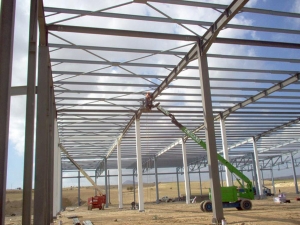FM-900 SOLVED BASED INTUMESCENT PAINT EXTERIOR USE (UL certificated for external use)
FIRE RESISTANCE IN STEEL STRUCTURE UP TO 2 HOURS
CERTIFICATES: UL263, EXOVA BS 476 Part 2, CERTIFIRE, ASFP
Product Description
When the temperature reaches 200℃, FIRECUT FM-900 starts to react and gradually forms a cake-liked char layer approximately several ten folds of initial volume. This char layer can insulate conduction of heat so as to slow down the time that steel to reach critical temperature, thus achieve the purpose of protecting steel structure.
Product Characteristics
1.Smooth and pleasant surfaceExcellent surface finish on coated surface, can be used together with different types of topcoats in different colors, thus provides fire protection and decorative functions.
2. No asbestos contentTested by the Institute of Industrial Research of Ministry of Interior Affairs according to NIEA R401. 21T & CNS 13970 A3365 that absolutely no asbestos is included in the material contents. Also tested by Singapore TUV PSB TEST Corporation according to BS 476: Part 7: 1997standard that the surface flame spread is 『Class One』.
3. Easy to apply and suitable for airless spray, brush and paint rollerWet film thickness can reach 1000 μm or above without sagging, quick drying and short over-coating intervals.
4. Excellent fire protection performanceMinimum D.F.T. 0.29 mm of FM-900 coating can comply with BS 476: Part 21 for one hour fire protection on 3-sided steel I-beams.
5. Adequate supply, stable quality and excellent after-sales serviceAudited and certified by Germany TUV and the Bureau of Standards, Metrology and Inspection (BSMI), Ministry of Economic Affairs of Taiwan R.O.C. in the areas of research & development, manufacturing, application, and sales / customer services of the fire production coatings and they all comply with ISO 9001: 2000 Quality System. Also participate in the product traceability system (Cert. No. CF249) of the third party certification organization in U.K. which is Bodycote Warringtonfire Certification Reg. No. 2250182【CERTIFIRE】. Being the largest coating manufacturer in Taiwan, automatic equipments are used for manufacturing and annual production capacity can reach several hundreds of thousands drums, the consistency of quality and supply are superior than other foreign and domestic products.
6. Fire testing certifications(i) Certified by U.K. Bodycote Warringtonfire Testing Global Safety (WFRC) and BRE Centre for Fire and Security Testing (LPC Laboratories) according to BS 476 Part 20 & 21 Standards to achieve 2 hours fire protection on structural steel sections such as I(H) steel beams& columns, rectangular hollow steel beams and rectangular & circular hollow steel columns. (ii) Passed GB 14907-2002【All Performance Type Tests】on Super Thin Type Fire Protection Coating for Structural Steel by National Center for Quality Supervision and Testing of Fire Building Materials (NFTC) in Dujiangyan, Sichuan City of China. It is registered in the official website of National Center for Quality Supervision and Testing of Fire Building Materials, and is categorized as CB Group Super Thin Type Fire Protection Coating for Interior Structural Steel. <Coating System>FIRECUT FM-900 Solvent-based Intumescent Fire Resistance Mastic Coating System should include together anti-corrosive primer, fire-resistance middle coat and decorative topcoat.
- Suitable Topcoat & Primer System
- Suitable anti-corrosive primer:
- Substrate as general blasted steels:
- EP-03 or equivalent (Epoxy Zinc Rich Primer):Max. D.F.T. 75 μm.
- EP-66 or equivalent (Epoxy Zinc Phosphate Primer):D.F.T. 40~100 μm.
- EP-66 / EP-20 or equivalent (Epoxy Zinc Phosphate Primer / Epoxy M.I.O. Primer):
Total D.F.T. Max. 100 μm.
- EP-03 / EP-20 or equivalent (Epoxy Zinc Rich Primer / Epoxy M.I.O. Primer):
Total D.F.T. Max. 100 μm. - IZ-01 / EP-20 or equivalent (Inorganic Zinc Rich Primer / Epoxy M.I.O. Primer):
Total D.F.T. Max. 100 μm. - Or other anti-corrosive primer approved by the original manufacturer.
- Substrate as hot-dipped galvanized steels:
- No.1020(Epoxy Alloy Primer) : D.F.T. about 25~35 μm.
- No.7417(Epoxy Alloy Primer) : D.F.T. about 25~35 μm.
- Or other alloy primer approved by the original manufacturer.
- Suitable decorative & protective topcoats:
- Interior Environment
- RF51~56 or equivalent (Acidic-resistant, Alkali-resistant Chlor Rubber Paint):
Min. D.F.T. 40 μm. - EP-04FM or equivalent (Epoxy Topcoat):Min. D.F.T. 40 μm.
- No.1030FM or equivalent (Water-based Epoxy Topcoat):Min. D.F.T. 40 μm.
- Or other topcoat system approved by the original manufacturer.
- RF51~56 or equivalent (Acidic-resistant, Alkali-resistant Chlor Rubber Paint):
- Exterior Environment
- No.1060FM / UP-04 or equivalent (Epoxy Middle Coat / PU Topcoat):
Total D.F.T. Max. 100 μm.
- No.1060FM / UP-04 or equivalent (Epoxy Middle Coat / PU Topcoat):
- Interior Environment
- No.7466 / No.5400F or equivalent (Sigma Epoxy Middle Coat / Yung Chi Paint):
Total D.F.T. Max. 100 μm.
- Or other topcoat system approved by the original manufacturer.2. Conformance with BS 8202: Part 2: 1992 Durability Test(i) Internal Exposure Situations with Construction Phase : Passed the testing conducted by Singapore PSB Test Laboratory(a) Exposure Situation:
| Test Situation - hours | Exposure Situation Description |
| Humidity Test - 250 hours | Inside test chamber at RH 97~100% & temperature 95±3℉(35±1.5℃) for 250 hours (10 days)。 |
| Washing Test - 20 cycles | Each cycle consisting of thoroughly wetting the sample with a 2.5 % (m/m) solution of powdered soap and water and leaving to air dry without rinsing。 |
| Freeze-thaw Test - 5 cycles | Cycle consisting of 24 hr at -20℃ followed by 24 hr at +20℃ |
| Sulfur Dioxide Test - 5 cycles | BS 3900:Part 8:1976, using 0.2 L of SO2 per 300 L chamber. |
| Heat Exposure Test - 6 months | At 50℃±2℃ in a controlled environment. |
| Natural Exposure Test in Exterior Environment - 6 months | Exposed in an exterior industrial environment. |
(b) Suitable Coating System
Anti-corrosive Primer: Epoxy Zinc Phosphate Primer / EP-66 / D.F.T. 60~100 μm.
Decorative & Protective Topcoats:
- Water-based Epoxy Topcoat / No.1030FM / 2 coats / D.F.T. about 100 μm.
- Water-based Epoxy Primer & Topcoat / No.1033 + No.1030FM / Total 2 coats /
Total D.F.T. about 65~75 μm. - Solvent-based Epoxy Topcoat / EP-04FM / 2 coats / D.F.T. about 70~80 μm.(ii) External Exposure Situations (a)Exposure Situations:
| Test Situation - hours | Exposure Situation Description |
| Humidity Test - 1000 hours | Inside test chamber at RH 97~100% & temperature 95±3℉(35±1.5℃)。 |
| Washing Test - 20 cycles | Each cycle consisting of thoroughly wetting the sample with a 2.5 % (m/m) solution of powdered soap and water and leaving to air dry without rinsing。 |
| Freeze-thaw Test - 10 cycles | Cycle consisting of 24 hr at -20℃ followed by 24 hr at +20℃。 |
| Sulfur Dioxide Test - 10 cycles | BS 3900:Part 8:1976,using 0.2 L of SO2 per 300 L chamber |
| Salt Spray Test - 2000 hours | BS 3900:Part F4:1968 (5% salt water) |
| Heat Exposure Test - 6 months | At 50℃±2℃ in a controlled environment。 |
| Natural Exposure Test in an exterior environment - 2 years | Exposed in an exterior industrial environment。 |
(b)Suitable Coating System
Anti-corrosive Primer : Epoxy Zinc Phosphate Primer / EP-66 / D.F.T. 60~100 μm.
Middle Coat: Epoxy Middle Coat / No.1060FM / D.F.T. 30~40 μm.
Decorative & Protective Topcoat: Polyurethane Topcoat / UP-04 / D.F.T. 50~ 60 μm.
Fire Protection Thickness
FIRECUT FM-900 Solvent-based Intumescent Fire-resistance Mastic Coating complies with U.K. BS 476: Part 21: 1987 Building Structural Material Fire Tests,the relevant certification reports are as below:
(i) WARRES No.107529&107530&111451/ Loaded I-Beam Sections
1 & 2 hrs. Loaded I-Beam Fire Test Reports.
(ii) WARRES No.114048/ Loaded RHS Beam Sections
2 hrs. Loaded RHS-Beam Fire Test Report.
(iii) WARRES No.109139&115162&115723 /Short Section Steels
1 & 2 hrs. Indicative Fire Test Reports.
(iv) WARRES No.136662&136663 and WF No.157668 /Short Section Steels
1 & 2 hrs. Indicative Fire Test Reports.
(v) WF Test Report No.148852/B & 148853/B Audit Test
Audit Test – Fire Test Reports.
(vi) TE 92771&94123/ Loaded I-Columns
1 & 2 hrs. Loaded I(H)-Column Fire Test Reports.
(vii) TE 94121&94525&200662/ Loaded RHS Columns
1 & 2 hrs. Loaded RHS Columns Fire Test Reports.
2. Assessment Reports:
(i) WFRC Assessment Report No.C110854 & WF No. 145918
30 & 60 mins. Fire rating Assessment Reports / I-sections Columns & Beams.
(ii) WFRC Assessment Report WF No. 167317
90 & 120 mins. Fire rating Assessment Reports / I-sections Columns & Beams.
(iii) WFRC Assessment Report No.C115007 & WF No. 164160
30, 60, 90 & 120 mins. Fire rating Assessment Reports / RHS-section Beams.
(iv) WFRC Assessment Report No.C125331 & WF No. 164159
30, 60, 90 & 120 mins. Fire rating Assessment Reports / RHS&CHS-section Columns.
(v) WFRC Supplement Assessment Report No.144304
30, 60, 90 & 120 mins. Fire rating Assessment Reports for Galvanized steel / All Types.
3. UL 263
Beam Design No. N628 and Floor-Ceiling Design No. D983
Preparation
1. Before the application, a detailed inspection on work site is required, appropriate arrangement should be made for the supply of water & electricity, tools & equipments for application, material storage, lighting, ventilation, waste disposal and safety of work benches etc.
2. Before the application, material types and topcoat color samples should be submitted to the contracting department for approval.
3. Before the application, complete method statements according to the drawing requirements and manufacturer’s specifications should be submitted for approval.
4. Before the application, the portions which do not require coating and the floors, walls & windows according to the drawings should be well covered in order to avoid the pollution during application.
Descriptions of Application
- During the application, the dust, sludge and impurities which affect the spraying should be completely removed。
- After the surface of application is cleaned, the method statements should be followed。
(i) Firstly anti-corrosive primer should be applied at the steel structure factory according to thickness requirements specified by the manufacturer. After the assembly of the steel structures and before the spray application, the areas of damaged primer should be touched up completely.
(ii) The thicknesses and the number of coats of the fireproofing middle coats should be applied according to relevant specifications for the required fire rating and the film thicknesses。
(iii) The average dry film thicknesses should meet the minimum requirements of the fireproofing middle coats. After the complete curing of the fireproofing middle coats, then follow the manufacturer’s specifications to carry out the application of decorative & protective topcoats.3. In order to ensure the quality & standard of the application, the coatings used for the project should be 100% from the original manufacturer, no other material or thinner should be added during the application. After the opening of cans on site, the application should be made according to the specified spraying equipments or painting tools and the specified quantity.
4. The method of application should be used by the traditional brushing or spraying, the equipments used for spraying should be airless spraying, the compression ratio is 45 : 1 or higher, the second air compression is 30~80 PSI, the size of the nozzle is 0.023”~0.027”, the angle is 30o~60o.
Notes for application
- If the temperature is under 5℃ or the relative humidity is higher than 85 % at the work site, the application should be avoided.
- During the application, the applicators should measure wet film thicknesses of the coating from time to time, and pay attention to avoid the wet film thicknesses more than 1,000 μm, in order to prevent the cracking of the paint films due to shrinking & curing.
- After the completion of the fireproofing middle coats, the dry film thicknesses will reach its curing level in the third day, and the topcoats can be applied 3 ~ 5 days after the completion of fireproofing middle coats.
- The temperature of steel surface should be at least 3℃ higher than Dew point temperature.
- If the application is done in a high temperature exterior environment, the wet film thickness of each coat should be lowered to 500 μm or below, in order to avoid the skin forming of the paint film without drying.
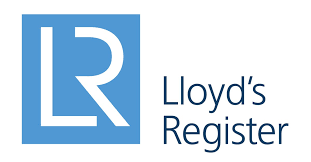
|

|

|
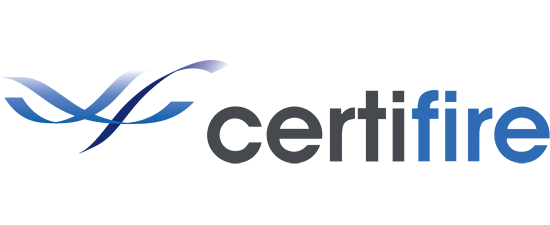
|
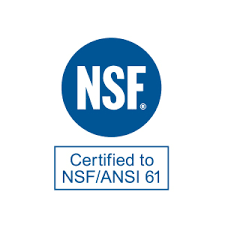 |
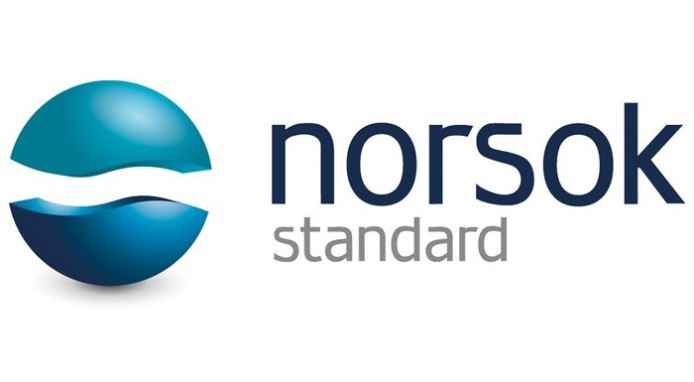
|
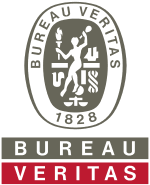
|

|
